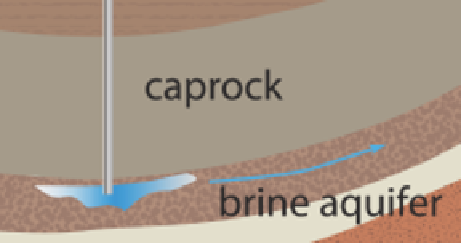Environmental Engineering Reference
In-Depth Information
Section 5
Caprock
We have seen that during injection we form a plume of supercritical CO
2
(see
Figure 9.5.1
). In many cases, we will have to rely on the caprock to
prevent the CO
2
from moving upward. We will now apply what we know
about fl uids in pores to understand the sealing mechanism of caprock.
Mechanism
Recall that caprock is often a shale with relatively small pores. Because of
the capillary effects, these pores prefer to be fi lled with brine relative to
CO
2
. Let us now assume that our caprock can be modeled as a “mem-
brane” with parallel cylindrical holes that are perfectly wetted by the brine
(see
Figure 9.5.2
). According to the Young-Laplace equation, as long as
the pressure of CO
2
is below:
2
pp
R
=+γ
,
g
w
gw
the capillary force will prevent the CO
2
from moving upward. We also see
that the smaller the pores, the larger the pressure we can sustain below
our caprock (see also
Question 9.5.1
)
.
Figure 9.5.1
Caprock
Because of the caprock, the injected CO
2
does not move upward.










Search WWH ::

Custom Search